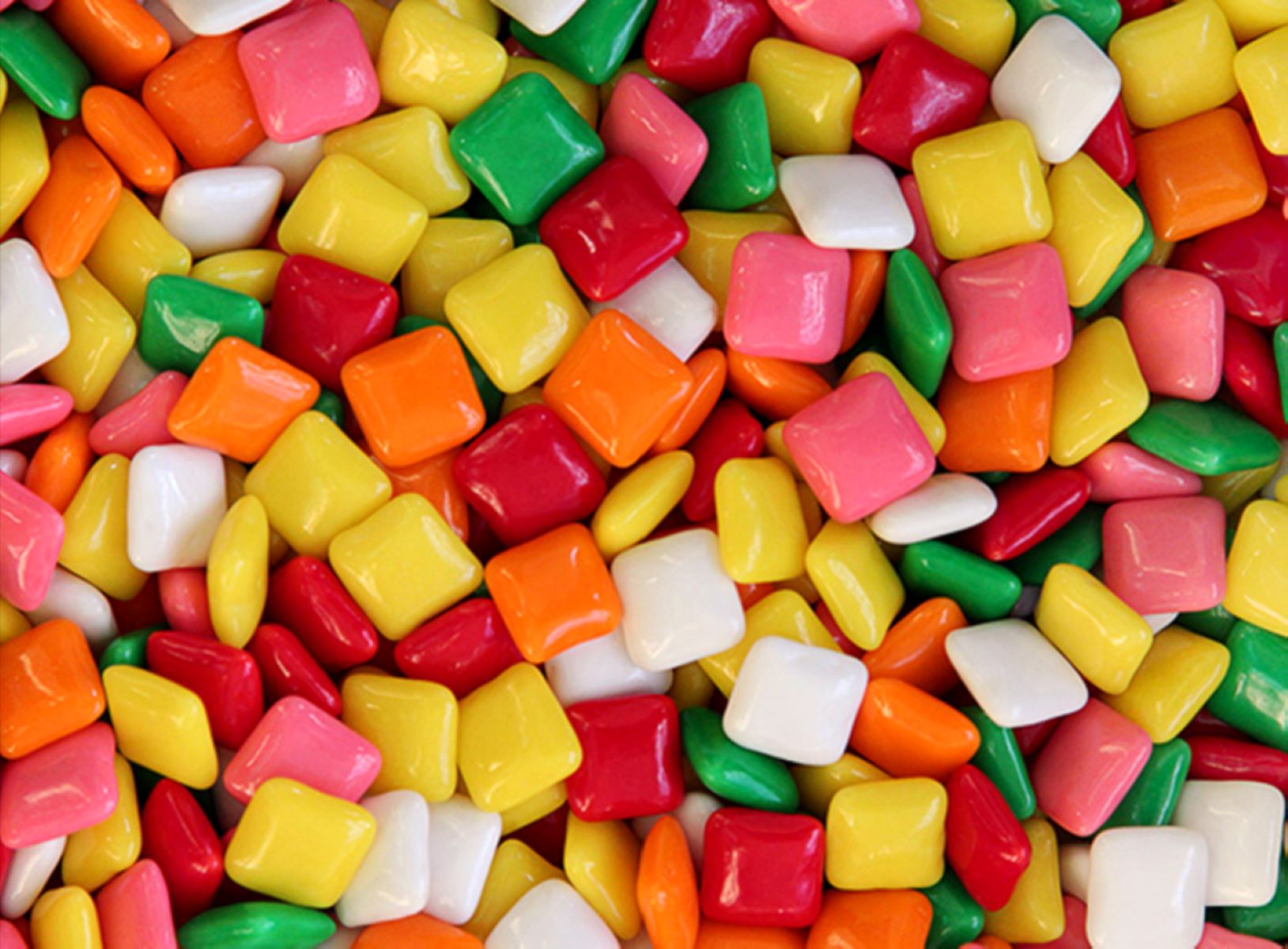Home>Food and Cooking>The Surprising Truth: Is Gum Actually Candy?


Food and Cooking
The Surprising Truth: Is Gum Actually Candy?
Published: January 31, 2024
Discover the surprising truth about gum and its classification as candy. Explore the connection between gum and the world of food and cooking. Uncover the facts now!
(Many of the links in this article redirect to a specific reviewed product. Your purchase of these products through affiliate links helps to generate commission for Regretless.com, at no extra cost. Learn more)
Table of Contents
Introduction
Gum, the chewy delight enjoyed by people of all ages, has been a staple in the world of confectionery for centuries. Many of us have grown up with the habit of reaching for a stick of gum after a meal or during a long day, savoring the burst of flavor and the satisfying act of chewing. But have you ever stopped to ponder the nature of gum itself? Is it truly a type of candy, or does it belong to a category of its own?
In this exploration, we'll delve into the fascinating world of gum, uncovering its ingredients, impact on oral health, and the marketing strategies that have shaped its perception in the eyes of consumers. As we embark on this journey, prepare to be surprised by the intriguing truths behind this seemingly simple treat.
The Ingredients of Gum
Gum, in its various forms, is composed of a distinct set of ingredients that contribute to its unique texture, flavor, and overall appeal. Understanding these components sheds light on the nature of gum and its classification as a confectionery product. Let's take a closer look at the key ingredients that make up this chewy treat:
1. Gum Base:
At the heart of every stick, pellet, or strip of gum lies the gum base, which serves as the foundation for its chewy consistency. This essential component is often a blend of synthetic rubber, waxes, and resins, providing the elasticity that allows gum to be malleable and enjoyable to chew.
2. Sweeteners:
To impart the familiar sweetness that lingers with each chew, gum manufacturers incorporate various sweeteners into their products. These can range from traditional sugar to alternative sweeteners such as xylitol, sorbitol, or aspartame, catering to the diverse preferences of consumers while maintaining the delightful taste that gum is known for.
3. Flavorings:
The diverse array of gum flavors, from classic mint to exotic fruit blends, is achieved through the addition of flavorings. These can be natural or artificial, carefully crafted to deliver a burst of taste that tantalizes the palate and leaves a refreshing sensation after each chew.
4. Softeners:
In order to prevent gum from becoming overly rigid or brittle, softeners are introduced into the formulation. These substances, often in the form of vegetable oils or glycerin, contribute to the pliability of gum, ensuring that it remains pleasantly chewable.
5. Coloring Agents:
To enhance the visual appeal of gum and distinguish between different flavors, coloring agents are utilized. These additives impart vibrant hues to the gum, creating an enticing visual experience that complements the delightful flavors and aromas.
In summary, the ingredients of gum are carefully selected and combined to create a sensory experience that transcends mere confectionery. From the elasticity of the gum base to the harmonious blend of sweeteners and flavorings, each component plays a crucial role in shaping the beloved treat that has captured the hearts and taste buds of countless individuals worldwide.
The Impact on Oral Health
The act of chewing gum has long been associated with various oral health implications, sparking debates and studies to ascertain its effects on teeth and overall dental well-being. While gum is often perceived as a sugary indulgence, the truth regarding its impact on oral health is multifaceted and extends beyond mere assumptions. Let's delve into the intricate relationship between gum and oral health to uncover the surprising realities.
1. Saliva Stimulation:
Chewing gum has been found to stimulate saliva production, which plays a crucial role in maintaining oral health. Saliva serves as a natural defense mechanism, aiding in the neutralization of acids and the removal of food particles from the mouth. This process contributes to the prevention of plaque buildup and the onset of cavities, ultimately promoting a healthier oral environment.
2. Sugar-Free Alternatives:
The emergence of sugar-free gum varieties has revolutionized the landscape of chewing gum, offering a viable option for individuals conscious of their sugar intake. Sugar-free gums often contain alternative sweeteners such as xylitol, which not only imparts sweetness without promoting tooth decay but also exhibits potential dental benefits. Studies have suggested that xylitol may help inhibit the growth of certain bacteria responsible for dental caries, further highlighting the potential positive impact of sugar-free gum on oral health.
3. Dental Concerns:
Despite the potential benefits associated with gum chewing, concerns have been raised regarding the impact of sugar-containing gum on dental health. Regular consumption of sugary gum can contribute to the accumulation of plaque and the erosion of tooth enamel, posing risks to oral health if proper dental hygiene practices are not observed. It is essential for individuals to be mindful of their gum choices and consumption habits to mitigate potential adverse effects on their teeth and gums.
4. Overall Considerations:
When evaluating the impact of gum on oral health, it is important to consider a holistic approach that encompasses various factors, including gum composition, frequency of consumption, and individual dental hygiene practices. While certain types of gum and the act of chewing itself can offer benefits such as saliva stimulation and potential caries inhibition, it is imperative for individuals to exercise moderation and make informed choices to safeguard their oral health.
In essence, the impact of gum on oral health is a nuanced subject that warrants careful consideration and informed decision-making. By understanding the interplay between gum chewing and oral well-being, individuals can navigate the realm of confectionery treats with greater awareness, ensuring that their smiles remain vibrant and their dental health is upheld.
The Marketing and Perception of Gum
The marketing of gum has played a pivotal role in shaping the public's perception of this chewy delight. From vibrant packaging to compelling advertisements, gum manufacturers have employed diverse strategies to position their products as not only a source of refreshment but also a symbol of lifestyle and enjoyment. The perception of gum, influenced by these marketing efforts, extends beyond its confectionery nature, encompassing elements of social appeal, oral care, and sensory gratification.
Branding and Lifestyle Integration
In the realm of gum marketing, branding has been instrumental in associating specific gum products with distinct lifestyles and experiences. Through strategic branding initiatives, gum has been portrayed as a companion for moments of relaxation, a breath-freshening aid, or a symbol of youthful exuberance. By aligning gum with these lifestyle narratives, manufacturers have cultivated a perception of gum as more than just a confectionery item, but as a versatile and indispensable accessory for various occasions.
Oral Care Messaging
Another significant aspect of gum marketing revolves around the promotion of oral care benefits. Sugar-free gum varieties, in particular, have been positioned as allies in dental hygiene, emphasizing their potential to stimulate saliva production and freshen breath. These marketing efforts have contributed to the perception of certain gum products as not only enjoyable treats but also as contributors to oral health, appealing to consumers seeking multifaceted benefits from their gum-chewing experiences.
Flavor Innovation and Customization
Gum marketing has also spotlighted flavor innovation and customization as key drivers of consumer appeal. By introducing an extensive array of flavors, ranging from traditional mint and fruit blends to unconventional tastes, manufacturers have sought to captivate diverse palates and cater to evolving consumer preferences. The ability to customize the gum experience through flavor variety has augmented the perception of gum as a dynamic and engaging sensory indulgence, further enhancing its allure in the eyes of consumers.
Social and Cultural Significance
Beyond the product itself, gum marketing has underscored the social and cultural significance of gum-chewing occasions. Whether portrayed as a bonding activity among friends, a confidence-booster in social settings, or a source of simple pleasures, gum has been positioned as a symbol of connection, confidence, and enjoyment. These narratives have contributed to the perception of gum as a social accessory that transcends its physical form, resonating with individuals seeking moments of connection and comfort.
In summary, the marketing of gum has wielded a profound influence on the perception of this beloved treat, elevating it from a simple confectionery item to a multifaceted symbol of lifestyle, oral care, and sensory delight. By weaving intricate narratives and appealing to diverse consumer desires, gum marketing has shaped the way individuals perceive and embrace this timeless indulgence, enriching its significance in their daily lives.
Conclusion
In conclusion, the journey through the world of gum has revealed a tapestry of insights that transcend its classification as a mere confectionery item. From the carefully selected ingredients that define its texture and flavor to the nuanced impact on oral health and the intricate web of marketing strategies that have shaped its perception, gum emerges as a multifaceted delight that intertwines sensory gratification, oral care considerations, and lifestyle appeal.
The exploration of gum's ingredients unveiled the artistry involved in crafting this chewy treat, showcasing the harmonious blend of gum base, sweeteners, flavorings, softeners, and coloring agents that converge to create a captivating sensory experience. This revelation invites a deeper appreciation for the craftsmanship that underpins every stick and pellet of gum, elevating it beyond the realm of ordinary confectionery.
Furthermore, the examination of gum's impact on oral health illuminated the complex interplay between gum chewing and dental well-being. While the stimulation of saliva production and the advent of sugar-free alternatives present potential benefits, concerns regarding the dental implications of sugary gum underscore the importance of informed consumption and mindful oral care practices. This nuanced understanding empowers individuals to approach gum with a balanced perspective, acknowledging its potential merits while safeguarding their oral health.
The journey through the marketing and perception of gum unraveled the intricate narratives and lifestyle associations that have enriched the cultural significance of this timeless indulgence. From branding and oral care messaging to flavor innovation and social symbolism, gum has transcended its physical form to become a symbol of connection, confidence, and enjoyment, resonating with diverse consumer desires and experiences.
In essence, the surprising truth about gum extends far beyond its classification as candy, unveiling a world of artistry, oral health considerations, and cultural resonance. As individuals savor the familiar burst of flavor and the satisfying act of chewing, they are invited to embrace gum as more than a confectionery delight, but as a versatile and dynamic companion that intertwines sensory pleasure, oral care potential, and lifestyle significance.
This journey through the intricate tapestry of gum leaves us with a newfound appreciation for this timeless indulgence, inviting us to savor each chew with a deeper understanding of the craftsmanship, considerations, and narratives that converge within every delightful stick and pellet.











